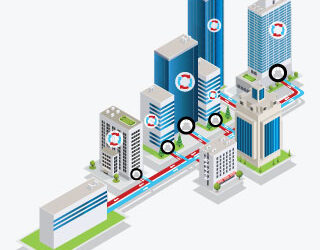Smart Cities Start Here: Financing Municipal Building Retrofits Through Shared Savings

Imagine a town hall where old tube lights buzz, ceiling fans run nonstop, and air conditioners work overtime. Now picture that same building – cooler, quieter, and cheaper to operate – after a few smart upgrades. That’s the promise of energy efficiency.
Retrofitting old buildings is one of the smartest and most affordable ways to cut energy use. Swapping out outdated systems like lighting or appliances can trim energy bills by 10-15%. Go deeper with efficient HVACs, and building envelope upgrades, and savings can jump to 30-40%[1]. Add rooftop solar or other renewables, and the impact multiplies. Lower costs, healthier spaces, fewer emissions – all without waiting for a bigger budget.
The snapshot below breaks down how different municipal buildings stack up, showing energy use before and after retrofits, what the upgrades cost, and how much money they’re now saving each year.
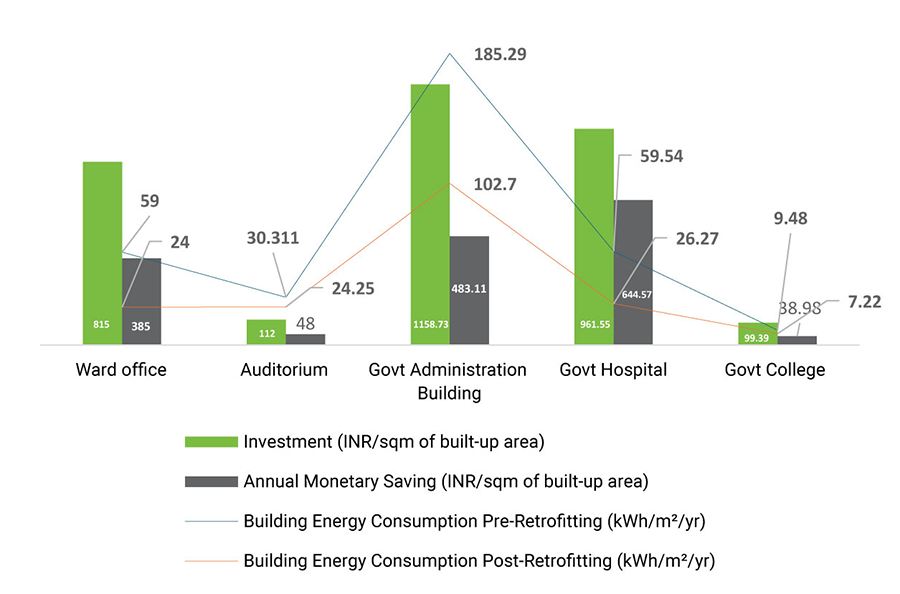 Figure 1 – Analysis of Building retrofits in Government Buildings2
Figure 1 – Analysis of Building retrofits in Government Buildings2
Note: The values of Building Energy Consumption (Pre and Post Retrofitting have been provided in bold.)
So, Who Pays for It?
While retrofitting saves electricity and emissions, municipalities, schools, and hospitals can’t always afford it.
Enter the Shared Energy Savings (SES) Model
The SES model flips the script. It uses future energy savings to finance upgrades, eliminating the need for upfront capital.
Here’s how it works:
- An Energy Service Company (ESCO) pays for and installs energy-efficient systems.
- You sign an agreement to pay them back using a share of your verified energy savings.
- A third party confirms the savings to ensure transparency.
- If there are no savings, no payout. It’s a performance-based model, grounded in data and trust.
The process can be summarised in the following five steps:
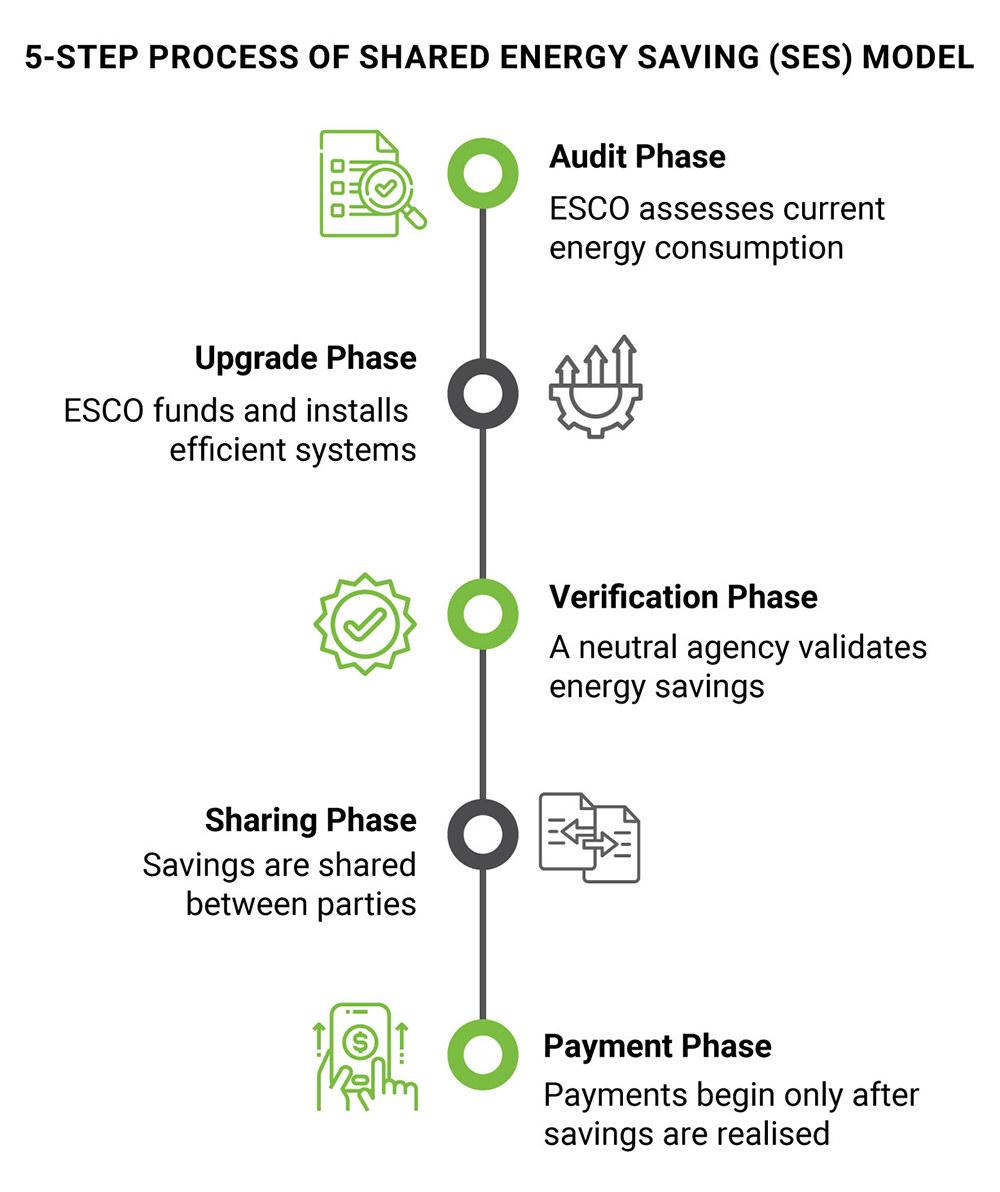
Why It Matters for Municipal Buildings
Urban Local Bodies (ULBs) manage energy-intensive assets, including schools, hospitals, and offices.
The SES model helps them by offering:
- No loans or upfront capital
- No financial risk
- Improved public services and lower energy bills
The Role of State Governments
To scale the SES model, state-level support is key. State Designated Agencies (SDAs) can serve as connectors between ULBs, ESCOs, and financiers.
With the right policies and frameworks in place, SDAs can:
- Bundle multiple ULB projects for economies of scale
- Simplify contracts and approvals
- Standardise performance metrics
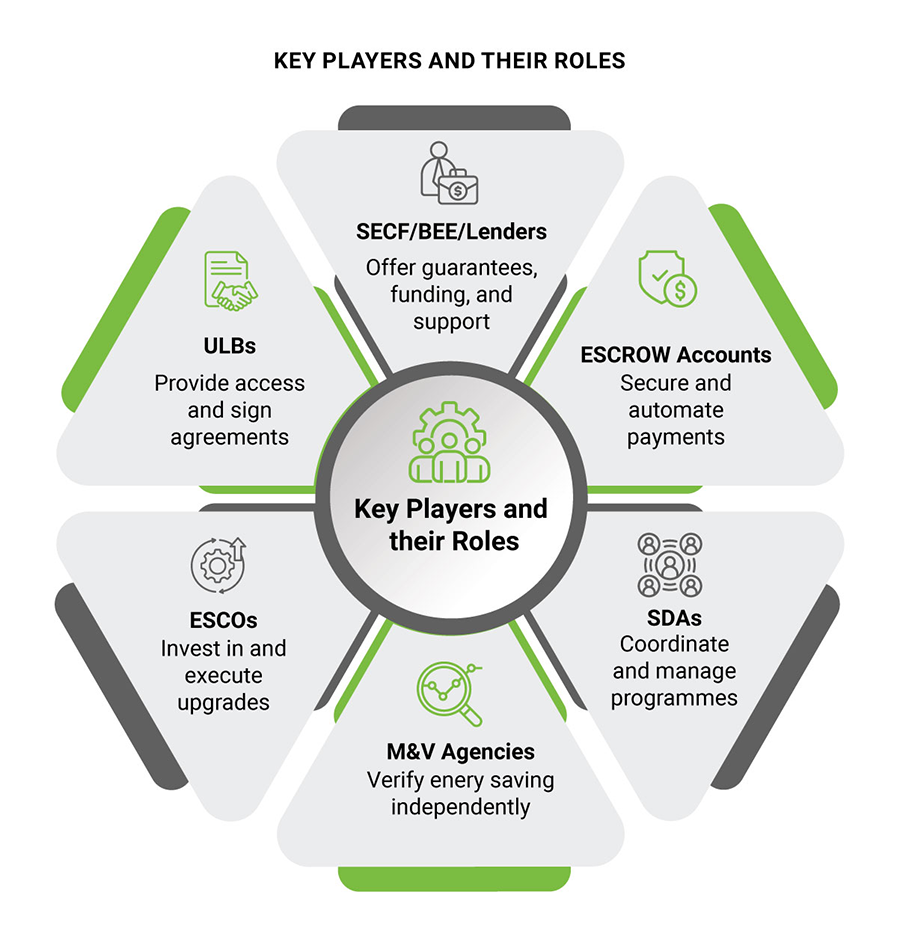
Success Stories Across India
This model isn’t just theory, it’s delivering results:
- Madhya Pradesh: Paryavaran Parisar and Udyog Bhawan saw 40% energy cuts through LED, HVAC, and insulation upgrades. Payback: 5-7 years.
- New Delhi: NITI Aayog’s phased retrofit combined deep efficiency upgrades with solar at its headquarters – now a national example.
- Bhubaneswar: Siksha ‘O’ Anusandhan University invested INR 21 crore in smart HVACs, solar, reflective roofing, and LEDs, saving INR 3 crore annually.
Unlocking State and National Support
Most states already have a State Energy Conservation Fund (SECF) – a powerful tool. With the right approach, SECFs can guarantee payments, frontload retrofit costs, and ease municipal participation. The goal: turn them into revolving funds that back large-scale upgrades like shared cooling and ESCO-led savings models. But to get there, SECFs need a larger corpus and rules that allow flexible, performance-based financing.
At the national level, the Bureau of Energy Efficiency (BEE) is laying the foundation. From co-funding audits and offering ready-to-use templates to guiding states through technical hurdles, BEE plays the quiet enabler. It builds confidence through training, pilots, and playbooks – helping states move from intention to action.
The infographic below breaks down how state and national support mechanisms can step in – filling funding gaps, managing risk, and building up capacity to help ESCO projects succeed.
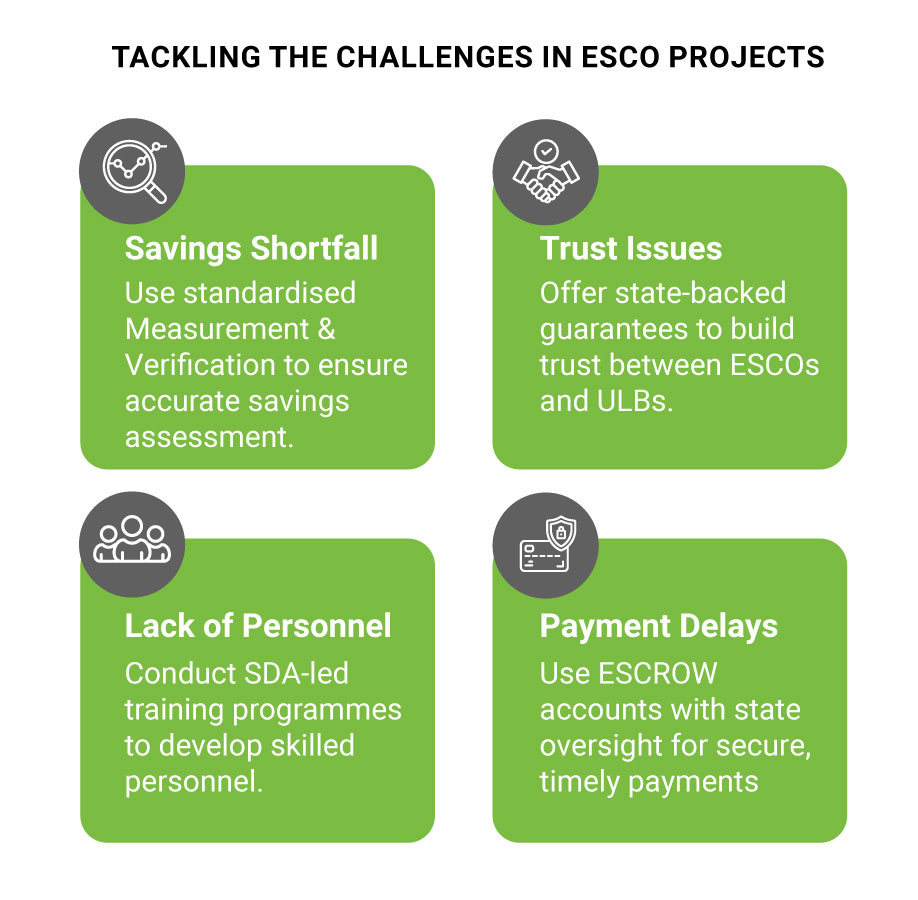
What States Can Do Now
To lead the way, states can:
- Launch pilots across 50-100 municipal buildings
- Bundle projects to cut costs and attract ESCOs
- Utilise SECF for guarantees and assurances
- Offer ready-to-use contracts, templates, and streamlined processes for ULBs
A Win-Win Model
Whether it’s a city hospital or government school, the SES model offers a no-risk, no-debt path to modernisation. It benefits:
- The Public: Better services and comfort
- The Planet: Lower emissions
- Governments: Smarter spending
The Road Ahead
Shared Energy Savings isn’t just a financing tool – it’s a smart strategy to modernise public infrastructure without burdening public budgets. With proven results, supportive policies, and scalable models, the path forward is clear.
By aligning financial innovation with environmental action, states and cities can accelerate the shift to cleaner, more efficient public buildings. The groundwork is laid. What comes next is simply implementation – step by step, building by building.
[1] Existing Commercial Building Retrofit Guidelines – The Energy Research Institute: https://www.teriin.org/sites/default/files/2019-06/existing-commercial-building-retrofit-guidelines.pdf.pdf
[2] The values presented for i) Govt. Administration Building are based on Building EE Retrofit project at Niti Aayog Building, New Delhi (https://library.niti.gov.in/cgi-bin/koha/opac-retrieve-file.pl?id=6452d42177e1d4bd39d49fb15542c15d); ii) Govt Hospital are based on Investment Grade Energy and Water Audit Report by ICLEI for Rajiv Gandhi Government General Hospital, Chennai (https://drive.google.com/file/d/11AJUxcR8Ee-31q8sjLXwUf9wQd6Ufk5U/view?usp=sharing); iii) Govt College are based on Energy Audit Report for Adarsh Mahavidyalaya, Osmanabad, Maharashtra (https://adarshcollege.in/wp-content/uploads/2023/02/7.1.3-Energy-Audit-report.pdf; iv) Ward Office: based on analysis of A-Ward Office, Pimpri Chinchwad Municipal Corporation by AEEE; and v) Auditorium: based on analysis of Ramkrishna More Natyagruha, Pimpri Chinchwad by AEEE.
Disclaimer: The opinions expressed in this article are those of the authors and do not purport to reflect the views of AEEE
This blog is written by – Winamra Negi
